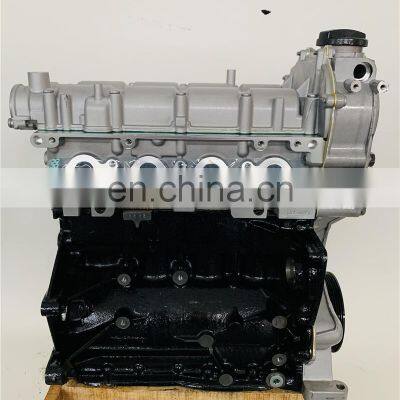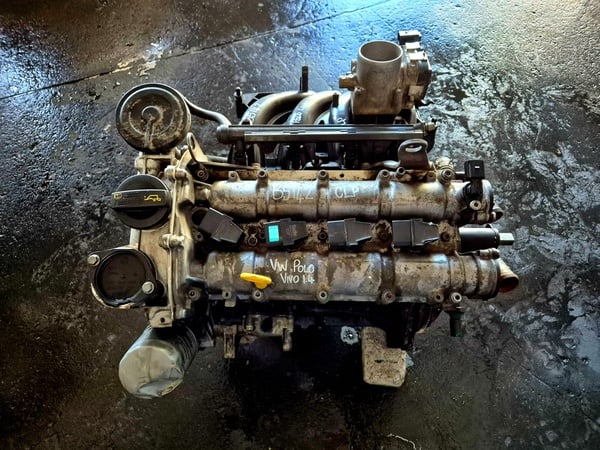Replace a state-of-the-art clp engine for better performance.
Replace a state-of-the-art clp engine for better performance.
Blog Article
How a Clp Engine Can Improve Performance in Numerous Industries
The arrival of CLP engines notes a substantial shift in functional effectiveness across different sectors, driven by their ability to optimize fuel consumption and lessen downtime. Industries such as production and logistics stand to obtain significantly from their robust design and regular power output, which promise to streamline operations and improve productivity. As companies increasingly prioritize sustainability alongside efficiency, the duty of CLP engines comes to be a lot more critical. What continues to be to be seen is how these developments will form the future landscape of industrial operations and their impact on broader financial fads (clp engine).
Introduction of CLP Engines
CLP engines, or Continuous Fluid Propellant engines, represent a considerable advancement in propulsion innovation, specifically for room applications. These engines utilize a continual feed system that allows for the sustained expulsion of propellant, resulting in improved performance and performance contrasted to typical strong or hybrid propulsion systems. By maintaining a constant circulation of liquid propellant, CLP engines can attain a lot more accurate drive control, which is critical for steering spacecraft in numerous goal situations.
The design of CLP engines incorporates sophisticated products and ingenious gas administration systems. clp engine. This results in minimized weight and enhanced integrity, vital factors for long-duration area missions. In addition, the constant operation lessens the risk of burning instability, a common difficulty in conventional rocket engines.

Benefits in Manufacturing
The manufacturing of Continuous Fluid Propellant (CLP) engines offers numerous significant advantages that improve both effectiveness and cost-effectiveness. One of the primary benefits is the structured manufacturing procedure, which minimizes the complexity related to conventional propulsion systems. By making use of fluid propellant, suppliers can accomplish higher precision in engine efficiency, leading to maximized energy output and lowered waste.
Additionally, CLP engines help with a higher degree of modularity, allowing for less complicated combination into numerous production lines. This flexibility can dramatically decrease lead times and enhance total operational adaptability. Using CLP innovation additionally has a tendency to reduce the need for extensive upkeep due to less moving components, which translates right into decreased downtime and functional expenses.

Applications in Logistics
Leveraging Constant Fluid Propellant (CLP) engines in logistics supplies considerable advantages in operational efficiency and integrity. These engines supply a robust solution for various transportation needs, making it possible for the smooth motion of products across large distances. The inherent design of CLP engines enables regular power output, which translates right into smoother and extra foreseeable transport routines.
Among the vital applications of CLP engines in logistics remains in durable freight transportation, where they can drive both ground and airborne lorries. Their capacity to preserve high performance under varying lots problems makes sure that shipment timelines are met, thereby enhancing customer fulfillment. Additionally, CLP engines can be incorporated into automated logistics systems, assisting in real-time tracking and maximizing course planning.
Moreover, the resilience of CLP engines reduces maintenance downtime, allowing logistics business to maximize their functional capabilities. This is specifically helpful in warehousing operations, where performance in managing and transferring items is vital. As logistics remains to evolve, the assimilation of CLP engines stands for a forward-thinking approach that not just boosts performance yet likewise sustains the sector's growing needs for reliability and rate.
Influence On Power Performance
Exactly How do Continual Liquid Propellant (CLP) engines improve power efficiency in transport? CLP engines utilize a constant circulation site here of liquid fuel, maximizing combustion processes and preserving a secure thrust outcome. This design decreases energy losses connected with traditional burning engines, where gas delivery can vary and cause inefficiencies.
The continuous operation of CLP engines permits for a more effective thermal cycle, causing greater specific impulse compared to traditional engines. clp engine. This converts to reduced fuel usage for the very same quantity of work done, dramatically lowering operational costs across numerous transport industries, consisting of Read Full Article air travel and maritime sectors
Moreover, the ability of CLP engines to preserve ideal efficiency under varying lots problems lowers the need for frequent velocity and slowdown, better improving fuel efficiency. Boosted power performance not just adds to cost financial savings yet additionally causes reduce greenhouse gas exhausts, straightening with worldwide sustainability goals.
Future Trends and Innovations
Emerging developments in Constant Liquid Propellant (CLP) engine technology assurance to change the landscape of transport effectiveness and sustainability. As markets pivot toward greener choices, CLP engines stand at the center, incorporating ingenious materials and design approaches that enhance efficiency while minimizing ecological effect.
One of one of the most encouraging fads is the fostering of hybrid systems that combine CLP engines with eco-friendly power resources. This synergy can maximize gas consumption and lower discharges, aligning with international sustainability objectives. Furthermore, advancements in computational liquid dynamics (CFD) are promoting the style of more aerodynamically reliable engines, causing reduced drag and boosted fuel performance.
Moreover, the development of wise surveillance systems is set to boost operational effectiveness. These systems utilize data analytics and IoT modern technology to optimize engine efficiency in real-time, ensuring that the engines operate within their most reliable parameters.
As study continues to check out different propellant formulas-- such as biofuels and artificial fuels-- the future of CLP engines looks appealing. By taking advantage of these developments, markets can not just improve their efficiency however additionally contribute dramatically to a cleaner, more sustainable future in transport.
Verdict
In conclusion, CLP engines stand for a substantial advancement in effectiveness throughout numerous sectors. Their ability to enhance gas usage and lower functional costs, try this website combined with a continuous feed system, improves power outcome and functional integrity. The integration of advanced materials and less relocating components decreases upkeep needs, while placement with sustainability objectives positions CLP engines as a pivotal technology for the future. Continued development in this area promises further improvements in efficiency and environmental performance.
Report this page